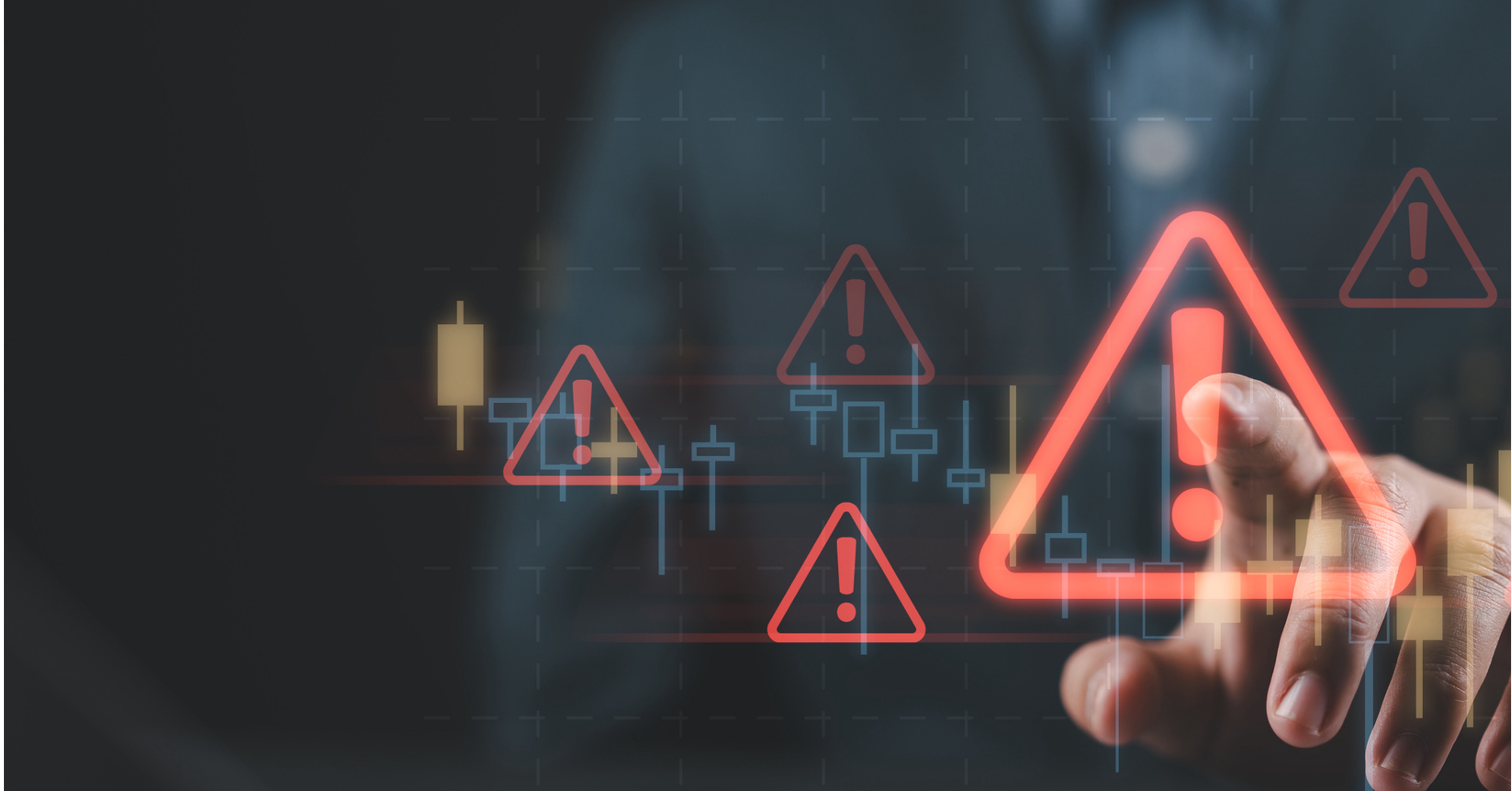The auto claims and repair ecosystem continues to feel the ripple effects of shifting trade policy, global supply chain disruptions, and evolving consumer behavior. While overall claim volumes have trended lower year-over-year, the industry is simultaneously facing new cost pressures tied to parts availability and pricing.

During our recent Q3 Crash Course webinar, CCC Senior Industry Analyst Kyle Krumlauf and Toby Pawlacyzk, Collision Parts Director of Parts Authority, explored why tariffs and international sourcing dynamics are beginning to reshape the economics of repair and what insurers and repairers need to monitor next.
Claims Volumes Are Down, But Costs Still Demand Focus
Presenting the current claims environment, Krumlauf discussed his analysis of year-to-date through Q3, in which overall auto claims volumes are down about 8% compared to last year. Repairable claims are down slightly more than total losses, reflecting higher deductibles and consumers avoiding filing claims for cosmetic damage – some doing so out of concern for increased insurance rates.
Despite the reduced volume, insurers are still navigating elevated severities across the industry. "We've now broached the $4,750 mark for the average total cost of repair," Krumlauf noted, adding that while year-over-year repair cost growth has slowed to around 1.6%, the composition of repair cost pressures is shifting.
And one of the major contributors to repair costs is parts.
Parts Inflation Is Real And It's Accelerating
Average parts prices began rising more sharply mid-year, with August and September showing some of the strongest increases yet.
Krumlauf highlighted that many of these increases align directly with tariff implementation timelines. However, the impact on total repair costs has been less dramatic so far because of the changing mix of vehicles being repaired.
Still, parts are getting more expensive. This is particularly important given that parts account for more than 40% of the average repair cost. Even modest increases in parts pricing compound quickly at scale.
Why Tariffs Matter: A Closer Look at Where Parts Come From
To understand how tariffs influence the collision repair market, Pawlacyzk walked through how the global parts manufacturing footprint has evolved.
Much of the aftermarket collision parts market is concentrated in Taiwan, a country currently subject to a 20% U.S. import tariff. "Whether it's aftermarket or whether it's original equipment, they're manufactured all over the world," Pawlacyzk explained, "but aftermarket products are primarily made in Asia, Taiwan in particular."
And Taiwan has built the infrastructure – ports, shipping lanes, manufacturing specialization – to move collision parts quickly and predictably. That matters.
"Taiwan makes it easy to import parts. They do a fantastic job… it's going to be challenging to beat," Pawlacyzk noted. While there is increasing movement to shift production to countries like Thailand, Vietnam, and Cambodia to reduce exposure to tariffs, those supply chains are still maturing. The transition will not be immediate or frictionless.
Freight Costs and Inventory Strategy Have Become Business-Critical Skills
Even beyond tariffs, parts distributors have been navigating freight volatility and inventory swings for years. "During the pandemic, freight costs went from normal levels to $20,000 - $25,000 per container," Pawlacyzk recalled. “You couldn't sell what you didn’t have, so many businesses took big inventory positions."
Today, many suppliers are working through that inventory while also preparing for new tariff-driven cost structures. For distributors and repairers, this has created a strategic balancing act between:
- Staying stocked enough to say "yes" to repairs
- Avoiding over-valued inventory that depresses margin
- Anticipating tariff timing and supplier price changes
- Maintaining profitability while keeping repairs moving
"The best that study it and prepare for it will win," Pawlacyzk emphasized.
Implications for Insurers
For carriers, the biggest considerations are:

While Krumlauf noted that overall repair cost increases remain relatively muted, he cautioned that monitoring parts trends closely is critical, especially as tariffs evolve.
Implications for Repairers
Collision shops face both risk and opportunity. Increased ADAS calibrations, for example, now appear on roughly 33% of repairable claims. Pawlacyzk sees this as a place where shops can differentiate.
"If I were to open up a collision repair shop tomorrow, I'd make sure I had the smartest kids coming out of trade schools," he said. "I'd have the equipment, and I'd invest in the diagnostic and calibration capabilities."
Shops that build the operational muscle to manage sourcing variability and complex technology repairs will win.
Navigating The Road Ahead
Tariff policy, consumer affordability challenges, parts sourcing shifts, and vehicle complexity trends are converging to reshape how claims get resolved and how repairs get done.
The winners in this next phase of the auto claims and repair market will be the organizations that collaborate more deeply across the claims and repair ecosystem, manage sourcing proactively, and invest in the skills and tools needed to fix the vehicles on the road today and well into the future.
The auto claims and repair ecosystem continues to feel the ripple effects of shifting trade policy, global supply chain disruptions, and evolving consumer behavior. While overall claim volumes have trended lower year-over-year, the industry is simultaneously facing new cost pressures tied to parts availability and pricing.

During our recent Q3 Crash Course webinar, CCC Senior Industry Analyst Kyle Krumlauf and Toby Pawlacyzk, Collision Parts Director of Parts Authority, explored why tariffs and international sourcing dynamics are beginning to reshape the economics of repair and what insurers and repairers need to monitor next.
Claims Volumes Are Down, But Costs Still Demand Focus
Presenting the current claims environment, Krumlauf discussed his analysis of year-to-date through Q3, in which overall auto claims volumes are down about 8% compared to last year. Repairable claims are down slightly more than total losses, reflecting higher deductibles and consumers avoiding filing claims for cosmetic damage – some doing so out of concern for increased insurance rates.
Despite the reduced volume, insurers are still navigating elevated severities across the industry. "We've now broached the $4,750 mark for the average total cost of repair," Krumlauf noted, adding that while year-over-year repair cost growth has slowed to around 1.6%, the composition of repair cost pressures is shifting.
And one of the major contributors to repair costs is parts.
Parts Inflation Is Real And It's Accelerating
Average parts prices began rising more sharply mid-year, with August and September showing some of the strongest increases yet.
Krumlauf highlighted that many of these increases align directly with tariff implementation timelines. However, the impact on total repair costs has been less dramatic so far because of the changing mix of vehicles being repaired.
Still, parts are getting more expensive. This is particularly important given that parts account for more than 40% of the average repair cost. Even modest increases in parts pricing compound quickly at scale.
Why Tariffs Matter: A Closer Look at Where Parts Come From
To understand how tariffs influence the collision repair market, Pawlacyzk walked through how the global parts manufacturing footprint has evolved.
Much of the aftermarket collision parts market is concentrated in Taiwan, a country currently subject to a 20% U.S. import tariff. "Whether it's aftermarket or whether it's original equipment, they're manufactured all over the world," Pawlacyzk explained, "but aftermarket products are primarily made in Asia, Taiwan in particular."
And Taiwan has built the infrastructure – ports, shipping lanes, manufacturing specialization – to move collision parts quickly and predictably. That matters.
"Taiwan makes it easy to import parts. They do a fantastic job… it's going to be challenging to beat," Pawlacyzk noted. While there is increasing movement to shift production to countries like Thailand, Vietnam, and Cambodia to reduce exposure to tariffs, those supply chains are still maturing. The transition will not be immediate or frictionless.
Freight Costs and Inventory Strategy Have Become Business-Critical Skills
Even beyond tariffs, parts distributors have been navigating freight volatility and inventory swings for years. "During the pandemic, freight costs went from normal levels to $20,000 - $25,000 per container," Pawlacyzk recalled. “You couldn't sell what you didn’t have, so many businesses took big inventory positions."
Today, many suppliers are working through that inventory while also preparing for new tariff-driven cost structures. For distributors and repairers, this has created a strategic balancing act between:
- Staying stocked enough to say "yes" to repairs
- Avoiding over-valued inventory that depresses margin
- Anticipating tariff timing and supplier price changes
- Maintaining profitability while keeping repairs moving
"The best that study it and prepare for it will win," Pawlacyzk emphasized.
Implications for Insurers
For carriers, the biggest considerations are:

While Krumlauf noted that overall repair cost increases remain relatively muted, he cautioned that monitoring parts trends closely is critical, especially as tariffs evolve.
Implications for Repairers
Collision shops face both risk and opportunity. Increased ADAS calibrations, for example, now appear on roughly 33% of repairable claims. Pawlacyzk sees this as a place where shops can differentiate.
"If I were to open up a collision repair shop tomorrow, I'd make sure I had the smartest kids coming out of trade schools," he said. "I'd have the equipment, and I'd invest in the diagnostic and calibration capabilities."
Shops that build the operational muscle to manage sourcing variability and complex technology repairs will win.
Navigating The Road Ahead
Tariff policy, consumer affordability challenges, parts sourcing shifts, and vehicle complexity trends are converging to reshape how claims get resolved and how repairs get done.
The winners in this next phase of the auto claims and repair market will be the organizations that collaborate more deeply across the claims and repair ecosystem, manage sourcing proactively, and invest in the skills and tools needed to fix the vehicles on the road today and well into the future.







